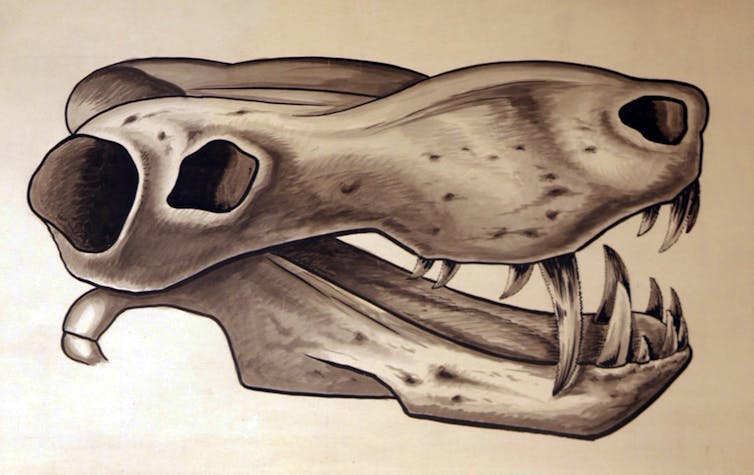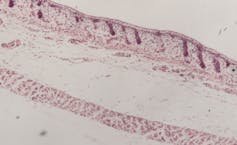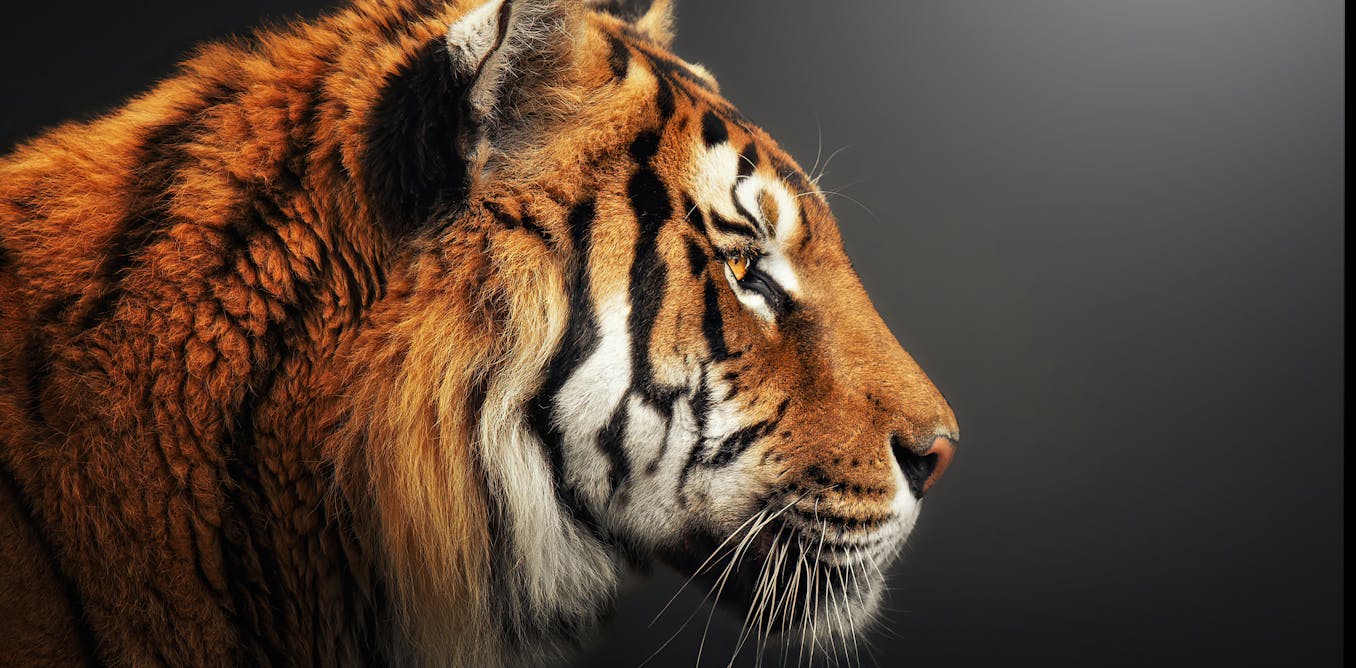When the hot summer weather kicks in you may find yourself feeling concerned about furry pets and other animals we live close by to. But fur and hair are ancient adaptations that allowed human ancestors to develop more active lifestyles and varied diets.
All mammals have some kind of fur. It’s part of what sets us apart from other animal groups. Fur comes in all shapes and types, including as human hair. Its thermoregulation properties can tell us about how our ancestors’ lifestyles changed as they diverged from reptile-like animals, becoming more active hunters.
Mammals are highly social and fur colouration also helps in distinguishing allies and enemies. It can help animals hide too. Think of a sand-coloured fox in the desert or a polar bear in the snow.
Birds are known to have evolved from the reptilian dinosaurs and feathers are highly modified dinosaur scales. The origin of mammalian hair in deep time is less clear because hard scales, bones and feathers preserve better than other types of tissue.
Fossil imprints of hair are found in Middle Jurassic species, such as the beaver-like Castorocauda, about 220 million years ago. And a mammalian ancestor with fossilised fur, the rat-like Spinolestes, which had a mohawk of bristles, is known from the Cretaceous period, 125 million years ago.
Such fossils are rare.
But scientists have found food residues that contain hair-like structures inside fossilised faeces from the Permian period, around 260 million years ago.
We can take a look, however, into mammal ancestor evolution to get a better understanding of fur and hair evolution.
We know the mammalian and the reptilian lineages separated from each other more than 300 million years ago. The first mammalian ancestors still looked very much like reptiles.
But they had a different diet. They hunted on large prey with their fangs, whereas reptiles originally fed on small spiders, millipedes or insects.
Constant temperature is an essential for stamina, in mammals, which you need for hunting. This can be accomplished, among other things, by developing fur.
Hunting also implies the need for spontaneous movement like sprinting off and pouncing on a prey. Daily sunbathing is, in contrast, essential for agility in reptiles, who sit on warm rocks and wait for insects to scuttle past.
The first animals to experiment with body temperature were mammalian forerunners, the early synapsids. Some of them had large lizard-like bodies and developed sails on their back, supported by outgrowths of the vertebrae.
Thanks to a dense blood vessel system of the surface of the skin, these sails could quickly absorb heat from the sun and release excessive body heat (like elephants and fennec foxes do with their large ears today). But this strategy did not work out for them: the sailed mammalian ancestors became extinct.
Early mammalian ancestors still had typical reptilian scales, with their weak thermoregulation properties. This is shown by fossil belly skin impressions of a 275-million-year-old (mid-Permian period) resting animal, found in Poland in 2012.
Wolfgang Gerber/University of Tübingen, CC BY-NC
In the upper Permian period, 255 million years ago, the early mammal ancestor Scymnognathus parringtoni lived. The Palaeontological Collection of the University of Tübingen, Germany, houses one of the most complete and most beautiful specimens of this fossil animal.
The specimen was found in the Usili formation, Ruhuhu, Tanzania, and was one of the top predators of its time. It still looked much like a reptile, but already had an upright body posture, which is more energy-efficient when running compared to sprawling limbs as reptiles do.

Theodor Baumann (1855-1932), CC BY-NC
Using the Tübingen specimen, palaeontologists showed in 2021 that early synapsids already had a greater metabolic rate than reptiles do. The indicator for that is the large nutrient foramen, a small tunnel with a nutrient artery, in the upper limb bone (femur). Mammal nutrient foramens are bigger than those in reptiles.
What’s more, unlike reptiles, Scymnognathus and other Permian species have an extensive blood supply in their highly vascularised snout. Small openings in the snout bones of these animals may indicate nerve passages and openings for blood vessels to support whiskers (vibrissae).
Whiskers are snout hairs specialised for tactile function, well known in modern mammals like cats. Maybe they were the first hairs to evolve and only later the fur developed.
Dinosaurs evolved around 233 million years ago in the late Triassic period, which is several million years after the first proof of hair in the mammalian forerunners. But the earliest dinosaurs already had simple hair-like feather precursors, which later separated into multiple barbs, formed shafts and barbules and later even vanes in more bird-like dinosaurs.
Did mammalian hairs develop from scales, the way feathers did? Yes and no.
In early embryo development, all land vertebrates have skin thickenings known as placodes. These genetically activated cell condensations are the precursors of all skin appendages – scales, feathers and hairs alike. Hair and feathers rely on the same genetic program.

layer.
University of Tübingen, CC BY-NC
But later in the embryo’s development, the structures take drastically different forms. The uppermost layer of the skin folds out to form scales and feathers. The skin folds in, however, to develop hair below the skin surface. The hair shaft only grows out of the follicle pocket later on.

University of Tübingen., CC BY-ND
In evolution, hair, scales and feathers originally served a similar function: thermoregulation and display. Birds evolved a complete flight apparatus long after the first feathers emerged.
Several mammals later lost their dense furs, such as whales (who evolved fat storage as an alternative for body temperature regulation) and humans. It’s not clear why humans lost most of their fur but some scientists think it was to keep cool during long hunts on hot savannas.



